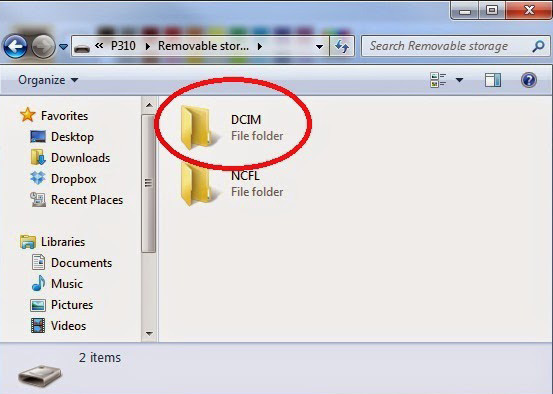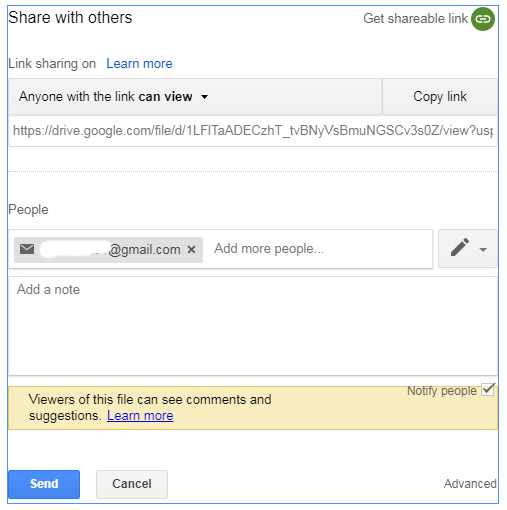Way 1 - Convert iPhone Video to Android via Drag & Drop
It's undeniable that the most simple way to send iPhone footages to Android is drag & drop, which can be realized without any third party applications or plug-ins. To do so, you just need a USB cable. Then follow the below steps to send your video clips:
Step 1: Free download and install iTunes on your computer. Or upgrade your iTunes to the latest version.
Step 2: Connect your iPhone to computer via a USB cable > open DCIM folder when your desktop recognizes your iPhone > choose the videos you need and copy them to your local hard disc > put the videos into a folder and rename it.
Step 3: Connect your Android phone or tablet via a USB cable, as well > drag and drop the video folder you previously saved into your Android device.
Note: some users have a beef about this way, for some synced video files won't play on their Android device, especially the iPhone recorded MOV HEVC video. We know your trouble since Android natively doesn't support video files formatted by .mov file extension, let alone the fresh HEVC codec for some older Android gadgets. In such cases, you can choose to download a MOV video player on your Android or download and use an iPhone video converter
- VideoProc Converter AI to convert MOV (HEVC/H264) to Android supported MP4, H264, 3GP, AVI, MKV, WMV, etc. formats first. Afterwards, import the iPhone video to your Android (Samsung, Huawei, Sony, LG, Xiaomi...) for smooth playback without format/codec/VBR/VFR/quality loss issues.
Way 2 - How to Transfer iPhone Videos to Android via Text
One of the most common ways to get iPhone videos to Android is to take advantage of text. The process is easy-peasy. You just need to pick out the desired video clips on your iPhone and then text them to Android. That's done! Well, what you need to pay extra attention to is the following preparations:
1. Activate SMS on your iPhone and turn off MMS or iMessage (designed for iPhones).
2. Make sure there is a powerful and stable network connection. What's plus, enable "Cellular Data" under "Cellular" option in Settings on iPhone.
3. Check for Software Update. If a new update is available, update it before you go.
4. Make sure that your video clip is within 300-600KB in file size. In case it's beyond that range, use video editor app or VideoProc Converter AI to resize iPhone video first.
Way 3 - How to Send iPhone Videos to Android via Cloud
When it comes to send large-sized videos from iPhone to Android, the cloud service is a nice option. They are used for more than just data back-up. Majority of them enables you to hassle-free share videos from iPhone to Android without the annoying hardware limitations.
And the gold winner and silver winner of the cloud services are no doubt Dropbox and Google Drive, both of which are free to use, with separately 2GB and 15GB free storage space for you to upload and store videos or other file data. Of course, you can expand your cloud storage capability via upgrading to premium version or completing additional tasks. Then, proceed to share iPhone (MOV) video clips to Android via Dropbox or Google Drive. Here we take Google Drive for instance.
Step 1: Open Google Drive official website > log in with your Google account on your iPhone.
Step 2: Enter "Drive" > choose "My Drive" > opt for "Upload files" or "Upload folder" to upload iPhone videos to Google Drive.
Step 3: Select video files you wanna send to Android under My Drive after the uploading is over.
Step 4: Right-click to select "Share" > enter names or Email addresses under "People" category.
Step 5: Tap "Get shareable link" > tap "Done" > choose "Send the link (no sign in required)" or "Send an invitation" if the recipient doesn't own a Google account.
Step 6: Click "Send" and you can then view this video link on your Android device. The similar steps are also applied into Dropbox video sharing.
Note: generally, the link shared video quality wouldn't be damaged unless your Android device doesn't natively support hi-res videos like 4K 2160p, 2K, 1080p video at 60FPS/120FPS/240FPS. So you might wonder why the video looks much better on iPhone than on Android. Upgrade your device if so.
Way 4 - How to Send iPhone Videos to Android via Email
The aforementioned workaround is quite practical as long as you have a Dropbox or Google account. If you just happen to have no such accounts, you can take Email into consideration. But there is an obvious omission in Emailing video. That is large-sized video. To put it in another word, you're only allowed to send small-sized video from iPhone to Android. How small could it be? Well, the commonly used Gmail and Yahoo set the upper limit as 25MB while iCloud Mail, Hotmail and outlook have even smaller capability, maximum degree at only 20MB.
You see, one minute of an iPhone recorded 720p 30FPS video at H264 codec is roughly 60MB. That's to say, you're given with the power to send a 720p 30FPS video to Android with 20-25 seconds in duration at most. Certainly, you can slightly lengthen your video duration if HEVC codec is supported on your iPhone. If not, you're suggested to transcode iPhone H264 to H265, cut iPhone video length, lower iPhone video 4K to 1080p, 1080p to 720p, or change slo-motion video frame rate 240FPS to 120FPS, 60FPS to 30FPS to duly reduce iPhone video size by using the cover-all iPhone video processing software - VideoProc Converter AI.
Final Words:
On top of the aforementioned methods, there are more options worth a consideration, including 3rd party apps (Send Anywhere, Phone Clone...), WhatsApp, Kakao, Skype, Facebook Messenger, etc. Or you can directly upload video footages to YouTube, Instagram, Vimeo, Snapchat, etc. on iPhone and download them to your Android for storage. Supposing you have better experience in iPhone to Android video sending, you're given with a wam welcome to share your precious experience with us.




 Home
Home

